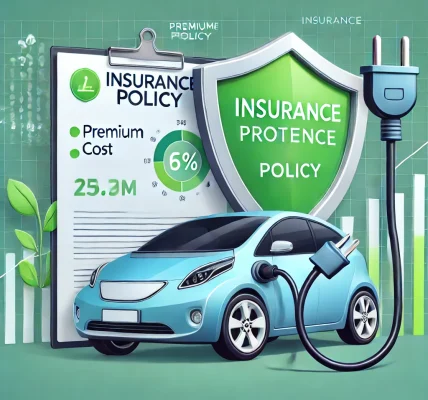Car insurance is essential for every driver, but high premiums can be a burden. The good news is that you can lower your car insurance costs without compromising your coverage. By understanding how insurance companies calculate rates and implementing smart strategies, you can save money while ensuring adequate protection. In this guide, we will explore practical ways to reduce your car insurance premiums without sacrificing coverage.
1. Shop Around and Compare Quotes
One of the most effective ways to reduce your car insurance costs is by comparing quotes from multiple insurers. Insurance providers use different formulas to calculate premiums, so rates can vary significantly. Use online comparison tools or work with an independent insurance agent to find the best deal.
Tips for Comparing Quotes:
- Obtain quotes from at least three to five insurance companies.
- Ensure the coverage limits and deductibles are similar for an accurate comparison.
- Look for discounts that might apply to your situation.
- Read customer reviews to assess the insurer’s reputation.
2. Increase Your Deductible
Your deductible is the amount you pay out of pocket before your insurance kicks in. Choosing a higher deductible can significantly lower your premiums. However, make sure you can afford the deductible in case of an accident.
Example:
- Increasing your deductible from $500 to $1,000 could lower your premium by 10% to 20%.
- Ensure you have enough savings to cover the deductible if needed.
3. Maintain a Good Credit Score
Many insurance companies use credit scores to determine premiums. A higher credit score often results in lower rates because insurers view responsible credit behavior as a sign of lower risk.
How to Improve Your Credit Score:
- Pay bills on time.
- Reduce outstanding debt.
- Regularly check your credit report for errors and dispute inaccuracies.
4. Take Advantage of Discounts
Insurance companies offer various discounts that can help you lower your premiums. Some common discounts include:
Common Car Insurance Discounts:
- Safe Driver Discount – For maintaining a clean driving record.
- Multi-Policy Discount – Bundling auto and home insurance.
- Low Mileage Discount – For driving fewer miles annually.
- Good Student Discount – For students with good academic records.
- Anti-Theft Discount – Installing anti-theft devices in your vehicle.
- Paperless Billing Discount – Opting for electronic statements and payments.
5. Drive Safely and Maintain a Clean Record
Your driving history is a major factor in determining your car insurance rates. Accidents, traffic violations, and DUIs can significantly increase your premiums. Practicing safe driving habits can help you qualify for lower rates over time.
Tips for Safe Driving:
- Follow traffic laws and speed limits.
- Avoid distracted driving (e.g., texting while driving).
- Take a defensive driving course to improve skills and qualify for discounts.
6. Consider Usage-Based or Pay-Per-Mile Insurance
If you don’t drive frequently, a usage-based insurance policy might be a good option. These programs track your driving habits and mileage, offering discounts based on safe and low-mileage driving.
How It Works:
- Insurers use telematics devices or smartphone apps to monitor driving habits.
- Safe drivers and those who drive less can earn significant discounts.
7. Remove Unnecessary Coverage
While having adequate coverage is essential, some add-ons may not be necessary for everyone. Reviewing your policy can help you identify areas where you can cut costs.
Coverage to Review:
- Roadside Assistance – If you already have this service through another provider.
- Rental Car Reimbursement – If you have access to another vehicle in case of an accident.
- Comprehensive Coverage – If your car is old and its value is low.
8. Bundle Your Policies
Many insurance companies offer discounts when you bundle multiple policies, such as auto and home insurance. Bundling can save you up to 25% on your premiums.
How to Bundle and Save:
- Check if your current insurer offers bundling discounts.
- Compare bundled rates with individual policies to ensure savings.
- Ensure the coverage meets your needs before switching.
9. Regularly Review and Update Your Policy
Insurance needs change over time, so reviewing your policy annually can help you find cost-saving opportunities.
When to Review Your Policy:
- After major life events (e.g., marriage, moving, buying a new car).
- If your driving habits change (e.g., working from home, reduced commuting).
- When your policy is up for renewal.
10. Consider Joining a Group Insurance Plan
Some employers, alumni associations, and professional organizations offer group insurance plans with discounted rates. Check if you’re eligible for any group plans to save money.
Benefits of Group Insurance:
- Lower premiums compared to individual policies.
- Additional perks and coverage options.
Conclusion
Lowering your car insurance premiums without sacrificing coverage is possible with the right strategies. By comparing quotes, increasing your deductible, maintaining a good credit score, taking advantage of discounts, and practicing safe driving, you can significantly reduce your insurance costs while staying protected. Regularly reviewing your policy and making adjustments ensures that you’re always getting the best value for your money.
Implement these tips today and start saving on your car insurance while maintaining the coverage you need!


